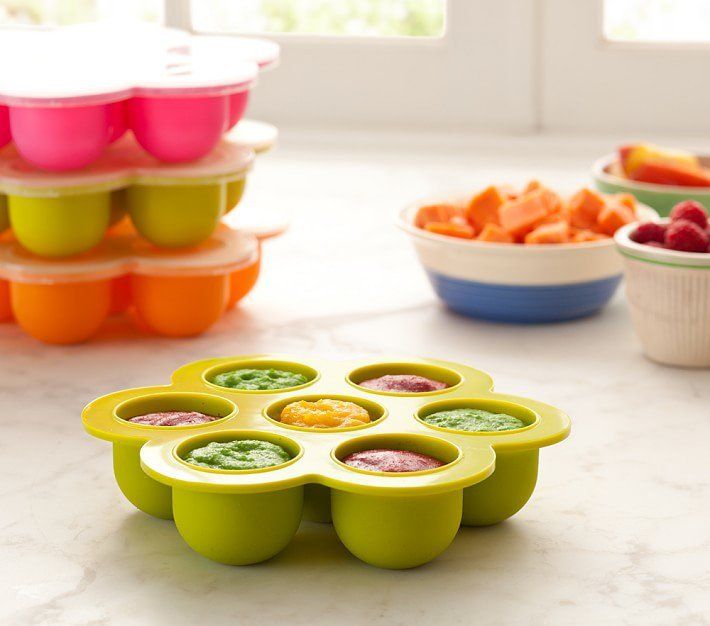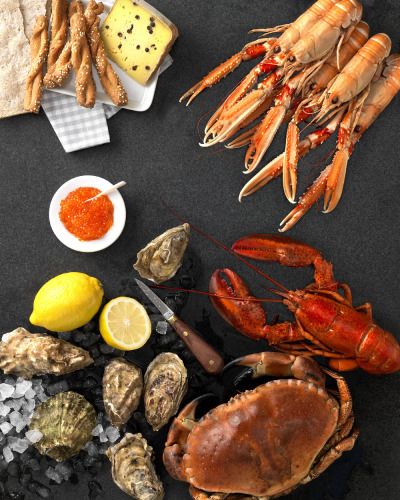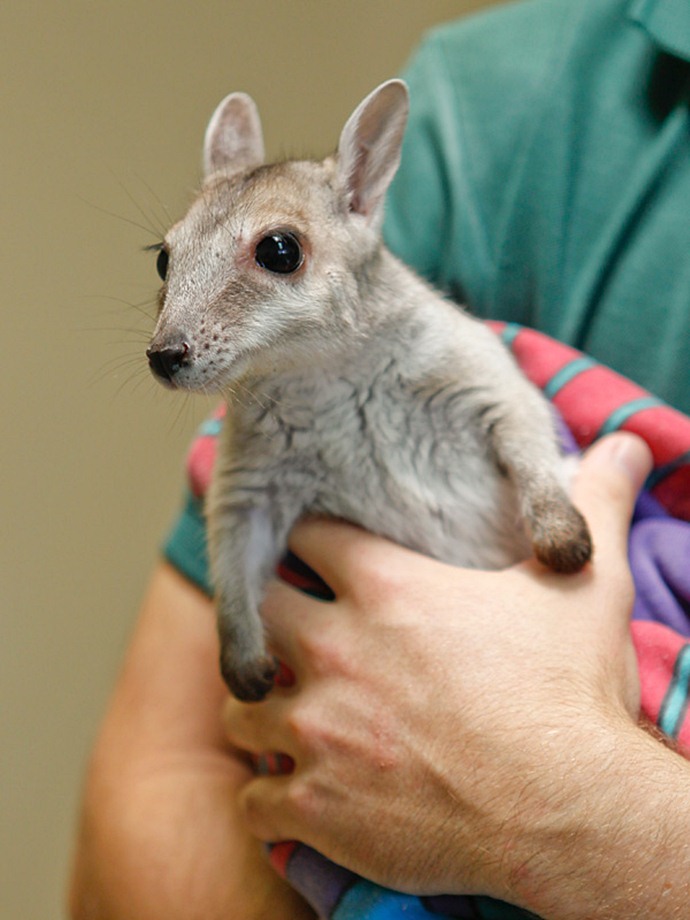When can baby mice eat solid food
When Do Baby Mice Start Eating Solids?
Baby mice are vulnerable little creatures. Just like babies of many other animals, they will need a lot of attention and special care during the first few weeks or even months of their lives.
The diet is one of the most important things for your mice when they are just born. You need to find a way to make sure the mice will eat the food, and that the food is not big enough for them to consume.
During the first few weeks, mice will like to eat non-solid and liquid foods and meals, and you should avoid solid foods for the first few weeks.
But when can you actually start feeding baby mice solid foods? At about 2-3 weeks old, baby mice can start eating soft solid food.
When they are this old, their teeth will already start to form, and they will have already grown quite significantly, especially if they have been under very special care from you during the first few weeks.
This is also when their eyes will start to open and they will start to see, which is why it becomes easier for them to eat solid foods as they can quite clearly see what they are eating.
In this article, we’ll discuss everything you need to know about mice and solid foods, and when you can start feeding your baby mice solid foods.
How to Tell How Old is a Baby Mouse?
The growth of mice is relatively rapid. In 2-3 weeks they will start to develop into bigger mice, they will start to gain their eyesight, and will start to eat solid foods.
But let’s go over the first few days and weeks and how you can tell how old your baby mouse is.
In the first 3 days, you will see that your baby mouse is pink and red in color. Within the next few days, the color will start to get less red. In the first few days, milk spots will also start to appear.
By day 4 or 5, their ears should be already fully developed. The skin color will also become much clearer and defined. The skin will thicken significantly, and the milk spots should be gone by now.
In the days between 6-9, the fur will slowly start to grow. First, it will appear behind the ears and will be very thin. But in these days, the fur will start to thicken and will start to appear on the belly. By day 10, the fur should be fully grown.
But in these days, the fur will start to thicken and will start to appear on the belly. By day 10, the fur should be fully grown.
From the days of 10 to 12, the teeth will start to erupt, and they should form almost completely by day 14. Also, females will start to show nipples. The pups will also become much more active and they will start to have more energy.
And as we’ve said, it might be as early as in day 14 that your baby mice will start to eat solid foods.
And the growth will be much quicker from then on, because the mice will start to eat more proteins and more calories, which is enabled to them when they start to eat solid foods.
How Often do Baby Mice Eat?
Baby mice will need food regularly and constantly. It will be as often as every 1-2 hours. That’s because you will be feeding them smaller meals, but these meals should be much more regular and you should also try to include as many proteins as possible.
In the first few days or weeks, these foods will be mostly liquid foods. However, after about 3 weeks, you should try to reduce the frequency of the meals, because the mice will be able to consume larger meals and get more calories in with just one meal.
However, after about 3 weeks, you should try to reduce the frequency of the meals, because the mice will be able to consume larger meals and get more calories in with just one meal.
After that, you should try to feed them meals every 3-4 hours, and then slowly transfer that to once or twice a day. This will normally be only achieved after a few months.
What Solid Food Can Baby Mice Eat?
Even if the mice will start to eat solids now, you should still try to include foods that are still quite liquid.
At first, it’s best to often cook some rice and make it really moist so that it’s easier to consume. Baby mice just love this type of food.
Also, baby mice will love to eat all sorts of cooked vegetables. This includes cooked peas, cooked carrots, squash, or other softer types of vegetables.
Also, you can try to feed them human baby food which is generally quite liquid and it’s a great way to add quite a lot of calories to their diet and make them grow quite fast.
Do Baby Mice Have Teeth?
Baby mice will start to develop teeth around day 10 or 11, sometimes also maybe later. However, the teeth will only fully develop in the following days or weeks, which is when you can start feeding them solid foods.
At first, their teeth will be still very small and sometimes also uneven. However, in the few days that will follow that event, the teeth will start to straighten out and they will grow, allowing the mice to chew solid foods easier, and allow them to grow faster.
What Do Baby Mice Eat When Their Eyes are Closed?
So, how can baby mice eat when their eyes are still closed? Mice have a really good sense of smell, even when they are very young.
They can smell food, and they will be able to sometimes find it on their own. However, for the first few days (if there is no mother around), you will need to feed them manually.
This can be time-consuming, but it will only last a few days until mice start to develop their eyesight. This will normally occur during the 2-3-week period.
This will normally occur during the 2-3-week period.
After that, feeding becomes much easier. Mice are able to eat on their own, and they will also start to grow better.
Conclusion
Baby mice require a lot of care. They don’t have teeth early, and they don’t develop their eyesight, so feeding them is a chore.
What Do Baby Mice Eat?
As an Amazon Associate I earn from qualifying purchases.
It’s not easy to care for abandoned newborn mice; many newborn mice die in the first week owing to heat loss, nutritional deficiency, or disease. Raising baby mice is difficult since it has no fur but it isn’t impossible. It has a reasonable possibility of survival if fed several times each day and given enough warmth.
What comes to mind when you hear the term “mouse”? This may be the kind of small, grey animal with a chunk of yellow cheese in its paws that many people are familiar with. A mouse could also be running around your home, opening cereal boxes.
This is why it’s important to be aware of what baby mice eat in the wild. It will assist you in learning how to keep these pests out of your home. So, let’s look at what baby mice eat in the wild and how our homes have become attractive dining halls for mice.
It will assist you in learning how to keep these pests out of your home. So, let’s look at what baby mice eat in the wild and how our homes have become attractive dining halls for mice.
Baby mice will suck on their mother’s milk for the first two weeks of their life. After that, baby mice can start eating solid foods, such as cooked rice and beans, cooked carrots, soft vegetables, and fruits.
If they are still without parents, give them kitten milk formula with a syringe or pipet. Remember to feed them every two or three hours. This may mean getting up at night, but it is necessary if you want to keep the kittens alive.
The newborn mice will not have developed their teeth, so they won’t be able to chew on the food at first. After three or four weeks, you should consider adding some solid meals. When the mice begin opening their eyes and growing, this is one of the signals that it’s time to exterminate them. You should also note when their teeth begin to develop.
Begin by offering them high-quality, nutritious foods to encourage growth. Fruits, seeds, vegetables, greens, and rodent diets are examples of these items.
What Do Baby Mice Eat in The Wild? A Baby MouseMice are not picky. A mouse’s diet is surprisingly broad, and a mouse will do just about anything to get its hands on it. They’re natural foragers who enjoy consuming a wide range of foods in the wild. Although they have their likes and dislikes, they do have certain tendencies.
Mice, like most other rodents, prefer insects to meat. These creatures will also consume smaller snails, larvae, centipedes, cricket eggs, and worms as a source of nutrition.
What Do Baby Mice Eat At Home? Cheese for Baby MiceMice, like in the wild, will take what they can get. While mice aren’t fussy eaters, they do have their favorite foods. Here’s a list of some of the things that mice enjoy eating.
You may be shocked to learn that mice dislike cheese more than other foods if you grew up watching cartoons of mice chewing on a massive slice of Swiss. That being said, a mouse would not leave an excellent chunk of cheese behind. They will still consume any cheese they discover.
That being said, a mouse would not leave an excellent chunk of cheese behind. They will still consume any cheese they discover.
Mice are omnivores, so they eat both plants and animals. They may munch on any leftovers or insects that they discover around your house.
How Much Do Baby Mice Eat? Baby Mice Love Insects!Mice are curious animals, and their food preferences reflect this. Instead of consuming a large chunk of food all at once, they like to nibble on many different things they’ve kept.
Mice are also hoarding animals. They enjoy rummaging through cupboards and pantries, gathering what they find, and bringing it back to their nests when food is in short supply.
Not only is this an annoyance in and of itself, but it also attracts pests like beetles, weevils, and other insects. This food storage may attract additional pests such as cockroaches, ants, and mice, causing a simple mouse infestation to rapidly develop into a full-blown pest issue.
Mice are generally unwilling to eat non-food items. If chew impressions are on cables, cords, wires, boxes, fabric other objects, this is due to the existence of a mouse nest rather than food consumption.
How To Feed Baby Mice?Step 1:Give your baby mouse some liquid nourishment. Baby mice drink mother’s milk. Instead, you’ll need to give your newborn mouse the milk it needs. Cow’s milk should be avoided. You may, instead, try soy formula, kitten formula made of goat’s or cow’s milk, or goat’s milk baby formula.
Step 2:Every two hours, give them a good meal. Your newborn mouse will require feeding around the clock until it opens its eyes. You must feed your newborn mice every two hours for those between 0 and 2 weeks old. They only need to eat every 3-4 hours after that. They shouldn’t eat during the night once their eyes are open.
Warm the milk first. Check a drop on your wrist to see if it’s cold or hot enough.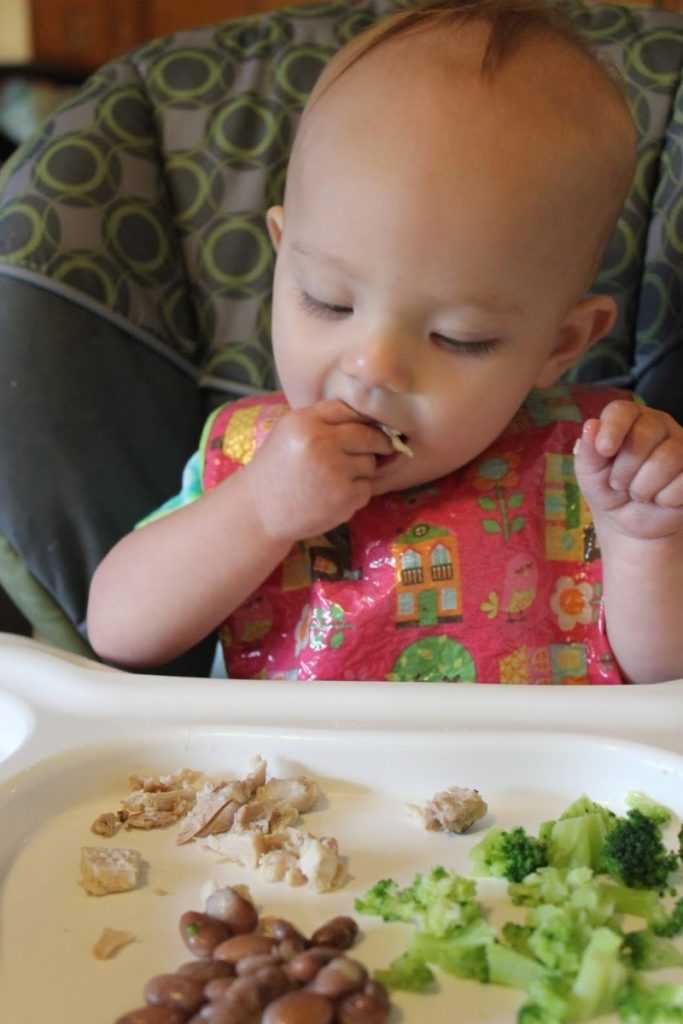 Using a syringe, eyedropper, or pipette, add milk to a mouse. With your non-dominant hand, firmly grip the mouse. With your other hand, hold the pipette and try to shimmy the probe into the mouse’s mouth. Warm milk should be used instead of cold water. This resembles stretching out and squirming
Using a syringe, eyedropper, or pipette, add milk to a mouse. With your non-dominant hand, firmly grip the mouse. With your other hand, hold the pipette and try to shimmy the probe into the mouse’s mouth. Warm milk should be used instead of cold water. This resembles stretching out and squirming
Solid foods should be introduced gradually after your mouse’s eyes are open. It may begin to eat solid food when its eyes are open. Continue feeding it formula until the 4 to 6 weeks old, at which point it will be weaned. Hamster or kitten food, baby food, or soft vegetables can all be offered.
Step 4:To help a mouse go to the toilet, stimulate it. Baby mice can’t urinate or feces on their own because they’re babies. The mother would generally lick them to encourage them to eliminate them. Place a cotton ball or your finger in lukewarm water and gently move it over the mouse’s genitals until it has eliminated itself.
What Are The Natural Predators of Baby Mice?What are the most dangerous animals for mice? While it is not uncommon for some of the larger tarantulas to consume a mouse, most spiders do not consider mice to be a common meal, and instead may appear on a mouse’s menu. Where a substantial amphibian may occasionally capture and consume a mouse, the bulk of their diet is composed of tiny animals, such as insects.
Where a substantial amphibian may occasionally capture and consume a mouse, the bulk of their diet is composed of tiny animals, such as insects.
There are several animals that consume mice as part of their regular diet in order to maintain the rodents’ populations in check. These are the creatures believed to be the mouse’s natural predators, and they may be found across a variety of species.
Birds
Hawks, eagles, and owls consider mice a welcome change of pace to be hunted and snared. The heron, crow, and blue jay are non-raptor birds that will eat rodents if they find them.
Reptiles
Although larger lizards are known to consume mice, snakes are generally the primary food source for them. People who keep snakes as pets are aware of the snake’s preference for a rodent dinner, but they are more frequently provided with frozen rodents rather than live mice because of their personal preferences or fears that their pets will be injured by food trying to defend themselves.
Mammals
Cats are commonly thought of as the mouse’s greatest adversary, but once they’ve finished playing with them, house cats will not eat mice. Their feral counterparts and wild cat relatives, however, actively seek out mice for food. Cats, like other species, will consume mice to fill their stomachs. Tigers, lions, and jaguars require more substantial meals, but they will still nibble on them to keep their hunger satisfied. Dogs are not as fussy about eating mice as cats are; nevertheless, they are just as ready to do so in order to survive.
Humans
There is another rodent-eating creature that has been observed. It’s a mammal, but it differs from the others in several respects. This species differs from the other mammals listed above because it does not eat mice. Locals avoid members of these societies because they are located in certain countries and are often shunned by those from throughout the rest of the globe. The human is one of the mouse’s greatest foes, and it is a member of this distinctive species.
Humans, as a species, are perhaps the pickiest eaters on the food chain. Humans’ tastes have evolved to the point where we are repulsed by certain foods, particularly those that are known to be parasite-carrying plague transmitters.
Mice are eaten on a regular basis in certain areas of the world, where circumstances demand that food be acquired where it may be found. Though many of the countries that offer mice on their menu no longer struggle financially, traditional dishes are still served, albeit as cultural delicacies for visiting tourists with strong stomachs. In Vietnam, Korea, China, Zambia, and Malawi, rats are known to be eaten in many ways.
Are Baby Mice Healthy To Eat?Mice are now a trendy source of protein, according to the Austrian Times, having been proven that there’s nothing edible that hasn’t been transformed into a delicacy somewhere in the world. It should be prepared similarly to other meats, just in smaller mouse-sized portions.
It’s possible to eat sewer rats. While you can eliminate many of the pathogens by cooking at a high temperature, rodents still feed on waste and human/animal remains. It is possible to eat cooked rats, although doing so might cause various illnesses and even death if not properly done.
Amazon and the Amazon logo are trademarks of Amazon.com, Inc, or its affiliates.
Mice: dangerous "fluffy" neighborhood
Finding food in winter is more difficult for mice; at this time, animals fully use what they can find in human dwellings or in non-residential buildings and warehouses. Mice harm trees, stocks of grain in warehouses, damage household food products, they do not disdain even soap and candle wax.
The destruction of food products is one side of the problem, the other is the contamination of most of them with the remnants of their vital activity. But there is another important point that everyone should know about: mice are carriers of the most dangerous helminthic and infectious diseases that are deadly to humans.
House mouse. Description and activity
The domestic mouse is a very small synanthropic one. Ever since the time when man stopped leading a nomadic lifestyle, these animals have become his constant companions. The man himself is of little interest to rodents. But the products, their storage places for fluffy ones are of considerable interest. Dwelling houses, barns, sheds, warehouses became not only a source of food, but also a reliable shelter.
A bit of biology
The size of the house mouse is very small compared to the harm it brings. Female - 20-30 grams, male - up to 50 grams. Life expectancy is a year and a half. The small, sharp claws on the fingers of mice allow them to grasp almost anything, so they are able to move along almost vertical surfaces, if they can at least somehow cling to it.
Interesting: An important role in the life of this animal is played by the tail. It not only helps to maintain balance, navigate in space like most mammals, but also actively participates in heat transfer.
It not only helps to maintain balance, navigate in space like most mammals, but also actively participates in heat transfer.
Small but very voracious
The mouse is a rodent. First of all, this affects the structure of the oral apparatus. Well-developed incisors allow the animal to cope with any food and with what at least looks like it. But the digestive organs of the rodent best cope with grains of cereals. The diet of a mouse in a human dwelling is very diverse. In addition to food, she does not disdain even almost inedible materials: wax, paper, leather.
Interesting: mice and cheese. Oddly enough, but these animals are absolutely indifferent to such a product. Of course, if there is nothing to eat except cheese, the rodent will not refuse it. But if the choice is present, then the mouse will rather prefer grains and cereals.
Smell is important!
The main thing that allows the mouse to quickly search for food is its sense of smell. The mouse nose and its vibrissae (whiskers) are able to provide information about the environment better than the eyes. Thanks to its sense of smell, the house mouse finds food, recognizes its relatives, and is also able to find its way to the food source from the dwelling. The mouse lives in a dwelling, not near a food source where it can be found.
The mouse nose and its vibrissae (whiskers) are able to provide information about the environment better than the eyes. Thanks to its sense of smell, the house mouse finds food, recognizes its relatives, and is also able to find its way to the food source from the dwelling. The mouse lives in a dwelling, not near a food source where it can be found.
Interesting: the so-called markers of mouse trails are small droplets of urine with a very characteristic odor. On it, rodents find their way back to their nest and recognize relatives.
The sense of smell is important, but the hearing of mice is also very highly developed. They are able to hear sounds that are outside the human auditory range, in particular, this is ultrasound - a sound of a very high frequency.
Fighting mice: modern remedies and folk methods
There are a lot of means of struggle: mousetraps, chemical traps, gels, sprays. There is even a special set of measures to get rid of rodents - deratization.
The first and probably the oldest remedy for mice that comes to mind is a cat. But it is really effective, but unfortunately, as practice shows, not every pet likes to spend its strength to catch small and very nimble animals. And the cat will not crawl where a fast mouse can dash.
The mousetrap is also a well-known way of fighting. But it's somewhat out of date. If several mice fall into it, the rest realize the danger of this device and begin to bypass it.
Folk wisdom to help
There have always been several folk tips and recipes that can give an edge in the fight against the ubiquitous rodents:
-
some plants well known to us, due to their chemical composition, are able to repel rodents: wild rosemary, tansy, calendula, cilantro, elderberry, daffodils, tomatoes and other representatives of nightshade, wormwood;
-
a real panacea for the fight against rodents from the plant kingdom is black root officinalis.
 Its second name is “rat racer”, and it was not received in vain;
Its second name is “rat racer”, and it was not received in vain; -
a folk alternative to the mousetrap is a mixture of flour and alabaster, rolled into small balls.
To combat mice, modern science has come up with many means, ranging from intricate mousetraps in the device, ending with special chemical and even biological preparations. But the optimal combination of efficiency, price and ease of use always takes its toll, so many owners opt for offline glue traps that are easy to use and have significant advantages:
-
safety: the composition is completely free of highly effective toxic substances;
-
the trap can be installed even in places where food is stored;
-
the product is safe for children, pets;
-
long action. Glue retains its properties up to 2 months;
-
no foreign smell.
How it works and how to use it
Glue trap-plate from rodents Offline is an effective and reliable tool, which is a complex of special glue prepared on the basis of rosin and a food attractant applied to a solid substrate. Attracted by an interesting smell for her, the mouse remains forever trapped without a chance to free itself.
Attracted by an interesting smell for her, the mouse remains forever trapped without a chance to free itself.
Using the glue trap is very simple: remove the protective paper and place protective equipment in places of possible animal paths with an interval of at least 2-3 meters. A few minutes of work and long-term protection is provided. Traps are examined in 1-2 days, later weekly. In the presence of trapped rodents or contamination of the adhesive surface, the traps are replaced.
Offline glue baits-traps are suitable for residential premises, as well as for sheds, barns and other technical structures. They are absolutely safe and do not threaten human health in any way, while allowing for a very long and most effective protection against small ubiquitous rodents, eliminating food spoilage and unpleasant health consequences from contact with mice.
What wild and domestic mice like to eat
Mice are rodents that do not suffer from lack of appetite. These animals are considered omnivores. And if you know what mice eat in the wild, many mistakes in the formation of the diet of a domestic rodent can be avoided.
These animals are considered omnivores. And if you know what mice eat in the wild, many mistakes in the formation of the diet of a domestic rodent can be avoided.
Contents
What do wild mice eat?
Mice generally like to eat high carbohydrate foods such as grains, fruits and seeds. They are able to survive for a long time on a small amount of food. When food is scarce, mice may even resort to eating their young. Some individuals have even been observed to eat their own tails.
In the wild, mice are primarily herbivores. In the warm season, they eat fruits, berries and seeds. During the cold winter months, mice will eat plant roots and tree bark.
Wild mice living in cities are most often omnivores, that is, they eat food of both animal and vegetable origin. Mice that live in the wild may also consume worms, crickets, centipedes, snails, and slugs. In urban environments, these rodents tend to eat food waste thrown away by humans.
Baby mice feed only on mother's milk. They continue to drink their mother's milk until they grow up and cannot eat a mixture of solid food and milk throughout adolescence. Mice are born blind, bald, and they are completely dependent on their mother. As they grow older, the mother brings adult food to the nest, and the babies learn to eat it.
They continue to drink their mother's milk until they grow up and cannot eat a mixture of solid food and milk throughout adolescence. Mice are born blind, bald, and they are completely dependent on their mother. As they grow older, the mother brings adult food to the nest, and the babies learn to eat it.
Source: http://natworld.info/vopros-answer/chem-pitajutsja-myshi-v-dikoj-prirode-i-domashnih-uslovijah
Features of mice
The body length of the animal can reach almost 20 cm, depending on the species. Mice are quite shy creatures and react to the slightest danger, and this is not surprising, since they have a lot of natural enemies. Rodents communicate with each other using a sound called "mouse squeak". These are social animals, so they mostly live in numerous colonies, although single individuals can also be found.
With the onset of autumn cold, rodents start preparing food for the winter. Mice stocks of food are stored in special nests, which they equip depending on living conditions. Most mice hide in burrows with complex systems of underground passages.
Most mice hide in burrows with complex systems of underground passages.
Mice have an excellent appetite, especially since they do not hibernate and need to eat all year round. At the same time, they cause serious damage to cultural plantations, destroying part of the crop. Fighting rodents is not at all easy, and rodents multiply at a high rate. Each female gives birth to an average of 10 cubs, and during the season she can become pregnant up to 4 times. After 2 and a half months, the offspring becomes sexually mature. The female bears her offspring somewhere a little more than 3 weeks. It is not difficult to guess at what rate rodent populations are increasing.
Important to know! Being in natural conditions, rodents live no more than a year, but being in captivity, they are able to live for about 7 and a half years.
Source: http://prusakam.net/chto-edyat-myshi/
General characteristics
Mice belong to the order of rodents. In it, they constitute a separate family, in which there are 400 different species. Depending on the locality, they are called Asia Minor, Sichuan, Caucasian, and so on. In Russia, the most common types of mice are house and forest mice. Their closest relatives are hamsters, voles and rats.
In it, they constitute a separate family, in which there are 400 different species. Depending on the locality, they are called Asia Minor, Sichuan, Caucasian, and so on. In Russia, the most common types of mice are house and forest mice. Their closest relatives are hamsters, voles and rats.
Usually the entire length of mice does not exceed 10 centimeters, half of which falls on the tail. The smallest species is the baby mouse, whose length is only 5 centimeters. These rodents have short prehensile legs, a small neck and a long tail. The presence of whiskers near the nose allows animals to navigate well in the area, in space, despite the time of day. Their ears are small, but they have excellent hearing, which often warns them of danger. The body is covered with short hair of different colors:
black, brown,
gray or white. Coloring can also be unusual: striped or variegated.
Source: http://fb.ru/article/163264/chem-myish-pitaetsya-chto-edyat-myishi-v-prirode
How long do mice live?
The life expectancy of rodents is directly related to environmental conditions. The average is 2-3 years. Factors such as climate, nutrition, infectious diseases and attacks by wild animals have the greatest influence on the lifespan of animals.
The average is 2-3 years. Factors such as climate, nutrition, infectious diseases and attacks by wild animals have the greatest influence on the lifespan of animals.
Both frost and dry, hot weather can be fatal for mice. Too sharp fluctuations in temperature destroy numerous colonies of rodents. Often associated with the weather and the ability to fully eat. An inadequate diet significantly shortens the life of a mouse.
Many species of mice living far from people live a little less or more than a year. And an animal tamed by a person, receiving a balanced diet and care, can live up to 6 years.
Source: http://zoo-sarov.ru/krysy/chto-edyat-myshi-v-domashnih-usloviyah.html
Habitat
Mice live on all continents. Together with man, they settled around the world and adapted to different climatic zones. Rodents feel great in the tropics, and in the mountains, and in the swamps. They are able to survive at a stunning height: 4,000 meters is not the limit for these little creatures.
Usually mice settle near human settlements. This applies primarily to the brownie and Cairo varieties. After all, in cities and villages at every step you can find what the mouse eats. Therefore, she is most comfortable here. But if natural disasters occur - fires, floods or earthquakes, rodents are able to leave their habitat and migrate.
Those species that live in the steppes or forests are poor swimmers. But marsh mice feel free on the water. There are three types of houses for rodents:
- simple minks;
- complex burrows in the form of labyrinths;
- grass stalk nests.
Mice are terrestrial. They rarely climb trees, but easily climb small shrubs.
Source: http://fb.ru/article/163264/chem-myish-pitaetsya-chto-edyat-myishi-v-prirode
Life cycle, how long they live
The wood mouse has a breeding season from March to October, when many matings occur between individuals of different sexes, which leads to competition and battles.
The gestation period of wood mice is 25-26 days, the female gives birth to five cubs, naked and blind. Mice become independent in about three weeks, ready to reproduce in two months.
Life span - 18 - 20 months. Mortality is very high in the spring among those who spent the winter. In juveniles, it increases in spring and summer after mating battles.
Source: http://klopabei.ru/gryzuny/chto-edyat-myshki.html
What do mice eat at home?
Pet mice should receive a varied and balanced diet that includes fresh fruits and vegetables, special mouse food, drinking water, and occasional treats. This diet will keep your pet in good health for as long as possible. Since mice like to chew on things to grind down their teeth, provide them with crunchy vegetables like carrots, etc.
Studies have shown that mice enjoy eating peanuts or sweet treats such as cookies and chocolate. However, such treats should be given occasionally and only in limited quantities.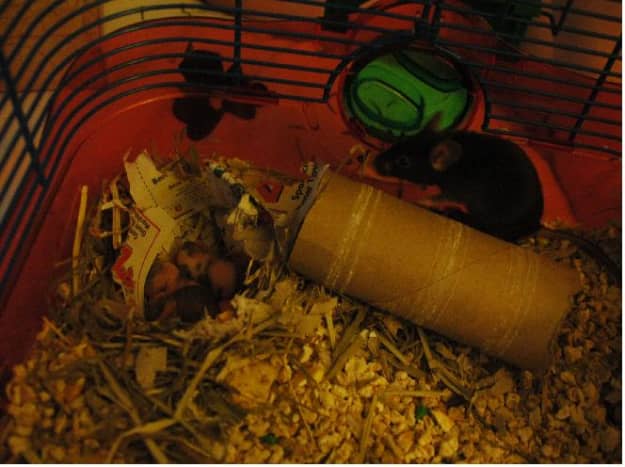 They are high in fat and sugar, which can lead to weight gain and dental problems. When choosing food for your pet in the store, give preference to foods with sufficient amounts of protein and fiber.
They are high in fat and sugar, which can lead to weight gain and dental problems. When choosing food for your pet in the store, give preference to foods with sufficient amounts of protein and fiber.
0003
How to choose the bait in the trap
Rodent control is carried out with the help of bait. Many believe that cheese is the favorite product of the animal. But it's not.
The article at the link has some interesting information about the misconception about cheese.
The most effective pieces will be:
Boiled porridge and sunflower seeds are also suitable. With the help of any of the listed products, the animals will fall into the trap very quickly.
Source: http://beztarakanov.ru/gryzuny/myshi/chto-edyat-myshi/
What is the best bait for mice?
That mice love cheese is just a popular myth. They actually eat the seeds and roots of plants, but inside our homes they are attracted to foods that are high in carbohydrates; therefore, chocolate and other sweets, as well as peanut butter, will be great at luring pest mice.
Didn't find everything? Use site search ↓
0003
What house mice like
Rodents that live near humans have a unique appetite. These are animals that quickly get used to a person and are easy to train.
House mice love apples, melons and grapes. In addition, their diet may include greens, bread, dried fruits, cucumbers, zucchini, etc.
Some varieties of mice eat raw meat, including their smaller cousins. Although it is believed that mice do not have cannibalism.
Source: http://prusakam.net/chto-edyat-myshi/
The harm that rodents bring . Understandably, people don't want to share their food supply with rodents. Therefore, they are trying in every possible way to get rid of the unwanted neighborhood when their traces are found in storerooms and barns.
In addition to stealing food, the animals also leave their droppings everywhere, so it is no longer possible to use a bag of cereals in which pests were hosting. Rodents also spoil the bark of fruit trees, which can lead to the death of seedlings. In Africa, for example, mice completely destroy coffee plantations, causing great damage to people.
Rodents also spoil the bark of fruit trees, which can lead to the death of seedlings. In Africa, for example, mice completely destroy coffee plantations, causing great damage to people.
Rodents carry many diseases. The most dangerous in this regard are not brownies, but field mice. Their feces and urine contain dangerous bacteria that can enter the human body and provoke an epidemic of pseudotuberculosis, hemorrhagic fever, tick-borne encephalitis and other deadly diseases.
Source: http://fb.ru/article/163264/chem-myish-pitaetsya-chto-edyat-myishi-v-prirode
Household mice
Thanks to modern breeding, decorative mice have hundreds of species, among which there are both singing, and "waltzing", and animals distinguished by an unusual coat color (albino white mice, pure black mice, ashen and cream animals).
Some types of mice are especially popular:
- The Japanese pygmy mouse is very tiny, up to 5 cm long. White skin is decorated with black and brown spots.
 Friendly, clean and energetic. Leads a nocturnal lifestyle. There are mice in the litter of 5-7.
Friendly, clean and energetic. Leads a nocturnal lifestyle. There are mice in the litter of 5-7. - Spiny mouse or akomis - a large decorative mouse with many needles located along the entire back. Color reddish-brown or blackish-red. The neck is framed by a voluminous fat hump. The nose is elongated, the eyes are convex, the ears are large, oval in shape. The mouse is very active, quickly gets used to people.
- Decorative African striped mouse - has an interesting coloration: light and dark stripes alternate along the body. The animal does not emit an unpleasant odor. It climbs well on vertical surfaces. The striped mouse is a very shy animal. In case of danger, it can pretend to be dead or jump to a height of up to 2.5 m. Body length rarely exceeds 10 cm.
Source: http://vsezhivoe.ru/mysh/
Mice: benefits and harms
Varieties of wild rodents have long been considered enemies of humans. Mouse vole harms plantings of grain crops. The house mouse contaminates products with feces and urine, makes books, clothes, and interior items unusable.




